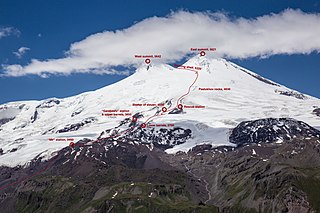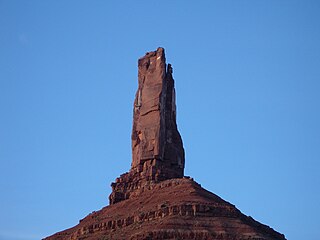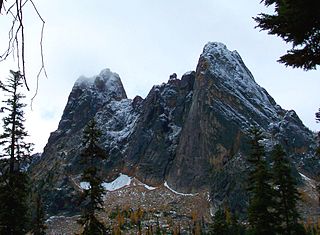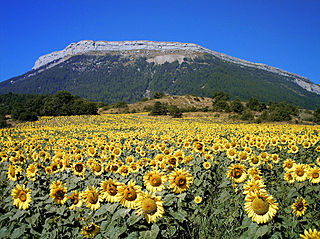 W
WA climbing route is a path by which a climber reaches the top of a mountain, rock, or ice wall. Routes can vary dramatically in difficulty and grade; once committed to that ascent, it can sometimes be difficult to stop or return. Choice of route can be critically important. Guidebooks, if available, are helpful in providing detailed diagrams and photographs of routes.
 W
WAction Directe is a famously difficult sport climb in the Frankenjura, Germany, first ascended by Wolfgang Güllich in 1991.
 W
WBunda de Fora is a sport climb located in Acephale, Alberta, Canada. At a climbing grade of 9a (5.14d), it is one of the most difficult climbs in North America and one of Canada's hardest sport climbs.
 W
WThe Casual Route is the easiest technical climbing route up the Diamond of Longs Peak.
 W
WCorrugation Corner is a technical rock climb at Lover's Leap near Lake Tahoe, CA first established in the 1960s. It is recognized for its high level of exposure as well as its pleasing aesthetics. Chris McNamara describes it as "one of the steepest granite 5.7s anywhere.".
 W
WThe D1 is the original technical climbing route up the Diamond of Longs Peak. In 1954, when National Park Service was petitioned to allow climbing on the Diamond they responded with an official closure. Climbing on the Diamond was banned until 1960. When the ban was lifted later that year, Dave Rearick and Bob Kamps were the first to climb the Diamond via a route that would come to be known simply as D1. This route would later be listed in Allen Steck and Steve Roper's influential book Fifty Classic Climbs of North America. Today the route is not necessarily regarded as the best of its grade on The Diamond, some consider other routes to be of higher quality. The easiest and most popular route on the face, the Casual Route (5.10-), was first climbed in 1977.
 W
WThe Diamond is the sheer and prominent east face of Longs Peak and named for the shape of the cliff. The face has a vertical gain of more than 900 feet (270 m) all above an elevation of 13,000 feet (4,000 m). It is a world-famous Alpine climb.
 W
WTryfan is a mountain in the Ogwen Valley, Snowdonia, Wales. It forms part of the Glyderau group, and is one of the most famous and recognisable peaks in Britain, having a classic pointed shape with rugged crags. At 917.5 metres above sea level, it is the fifteenth-highest mountain in Wales. The name ‘Tryfan’ is thought to derive from the intensifying particle try– and the noun ban, giving the meaning ‘very high peak’. Tryfan was voted Britain's favourite mountain by Trail magazine.
 W
WMount Moran is a mountain in Grand Teton National Park of western Wyoming, USA. The mountain is named for Thomas Moran, an American western frontier landscape artist. Mount Moran dominates the northern section of the Teton Range rising 6,000 feet (1,800 m) above Jackson Lake. Several active glaciers exist on the mountain with Skillet Glacier plainly visible on the monolithic east face. Like the Middle Teton in the same range, Mount Moran's face is marked by a distinctive basalt intrusion known as the Black Dike.
 W
WThe Durrance Route is a climbing route on Devils Tower in Wyoming, United States. First pioneered by Jack Durrance and Harrison Butterworth in September 1938, it was the second free ascent of Devils Tower, following the first ascent led by Fritz Wiessner in 1937. The Wiessner Route lies a few hundred feet to the right of the Durrance Route and has a comparable difficulty. Today the Durrance Route is the most popular route on Devils Tower. It is considered a more interesting and enjoyable route than the Wiessner Route, due to more variable terrain and better belay stances. The route is recognized in the historic climbing text, Fifty Classic Climbs of North America, and other guide books.
 W
WThe East Buttress Route is a technical climbing routes up Middle Cathedral Rock. The route is recognized in the historic climbing text Fifty Classic Climbs of North America and considered a classic around the world.
 W
WThe East Face of Mount Whitney is a technical alpine rock climbing route and is featured in Fifty Classic Climbs of North America. Mount Whitney is the highest peak in the contiguous United States.
 W
WThere exist a number of climbing routes used to reach the summit of the Mount Elbrus, most based in approaches through Prielbrusye National Park on its southeastern flank.
 W
WThe Ellingwood Arete is a popular technical climbing route on Crestone Needle in Colorado's Sangre de Cristo Range. The Ellingwood Ledges Route is recognized in the historic climbing text Fifty Classic Climbs of North America. An "arete" is "a sharp narrow ridge found in rugged mountains".
 W
WEs Pontàs is a natural arch in the southeastern part of the island of Mallorca. The arch is located on the coastline between the Cala Santanyí and Cala Llombards in the municipality of Santanyí.
 W
WThe Fly is a 25ft high 5.14d (9a) sport route or V14 (8B+) boulder located in the Rumney Rocks climbing area Rumney, New Hampshire, USA. It is located at the Waimea Cliff.
 W
WThe Kor-Ingalls Route is a traditional rock climbing route located on Castleton Tower. Castleton Tower sits in Castle Valley North-East of Moab, Utah. The Route is recognized in the historic climbing text Fifty Classic Climbs of North America and considered a classic around the world.
 W
WLa Rambla, also referred to as La Rambla Extension, La Rambla Direct or La Rambla Original is a famously difficult 41 metres (135 ft) long route located at the El Pati crag in Siurana, Catalonia (Spain), originally bolted by Alexander Huber and later extended by Dani Andrada.
 W
WThe Liberty Crack is a technical rock climbing route on Liberty Bell Mountain near Washington Pass and is featured in Fifty Classic Climbs of North America.
 W
WThe Lost Arrow Spire Tip is a popular technical climbing route up Lost Arrow Spire. This route begins at an area called The Notch. The Notch can be reached by making two rappels from valleys main wall or by climbing to it via another route from the base of the Lost Arrow Spire. For example the Lost Arrow Spire Chimney uses the Lost Arrow Spire Tip as its finish.
 W
WIn the sport of rock climbing, The Mandala is a bouldering problem in the Buttermilks, which is a popular bouldering area near Bishop, California. It is one of the most widely known boulder problems in the world.
 W
WMidnight Lightning is a bouldering problem on the Columbia Boulder in Camp 4 of Yosemite National Park. It has been described as the world's most famous bouldering problem. The first ascent was by Ron Kauk in 1978; the first female ascent was by Lynn Hill in 1998. Sam Moses, writing in Sports Illustrated said the most difficult move on Midnight lightning is a "spider-monkey swing 15 feet off the ground. The climber must suspend himself by the fingertips of his left hand, swing around a ledge of rock and propel himself far enough up, about four feet, to grab a precarious fingertip hold with their right hand. To do that he has to create momentum from stillness."
 W
WThe North Face of Fairview Dome also known as the Regular Route of Fairview Dome is a technical rock climbing route in Tuolumne Meadows of Yosemite National Park. It is featured in Fifty Classic Climbs of North America.
 W
WThe Northcutt-Carter Route is a popular technical climbing route on Hallett Peak in Colorado's Rocky Mountain National Park. The Northcutt-Carter Route is recognized in the historic climbing text Fifty Classic Climbs of North America.
 W
WThe Northeast Face of Pingora is a technical rock climbing route on Pingora Peak part of the Cirque of the Towers in the Popo Agie Wilderness part of the Shoshone National Forest. The route is featured in Fifty Classic Climbs of North America.
 W
WThe Nose is one of the original technical climbing routes up El Capitan. Once considered impossible to climb, El Capitan is now the standard for big-wall climbing. It is recognized in the historic climbing text Fifty Classic Climbs of North America and considered a classic around the world.
 W
WOpen Book is a technical rock climbing route at Tahquitz Rock, in Riverside County, California. Since the Yosemite Decimal System was developed at Tahquitz it is no coincidence that the first climb to be rated 5.9, Open Book, is also located at Tahquitz. In 1952, when Royal Robbins climbed it free, it was one of the most difficult free ascents in the country.
 W
WBiographie, or Realization, is a sport climbing route on a crag on the southern face of the 2,016-metre (6,614 ft) Montagne de Céüse near Gap and Céüse, France.
 W
WThe Regular Northwest Face of Half Dome was the first Grade VI climb in the United States. It was first climbed in 1957 by a team consisting of Royal Robbins, Mike Sherrick, and Jerry Gallwas. Its current aid climbing rating is VI 5.9 A1 or 5.12 for the free climbing variation. It is recognized in the historic climbing text Fifty Classic Climbs of North America and considered a classic around the world.
 W
WThe Royal Arches Route is a technical climbing route in California's Yosemite Valley on the Royal Arches wall. The route is recognized in the historic climbing text Fifty Classic Climbs of North America. The route was first climbed Oct. 1936 by Ken Adam, Morgan Harris, K. Kenneth Davis. The route is moderate in difficulty and is frequently climbed. The first 4 pitches are along a west facing dihedral. At Pitch 5, the route turns north and ascends the main face along crack systems. Pitch 10 can be free climbed at 5.10b however, most climbers use a fixed rope to pendulum to a long ledge. At the end of Pitch 15, begins the bolted rappel route. It is 18 rappels to the Valley floor. Some climbers prefer to continue to "The Jungle" at the end of Pitch 16. Beyond The Jungle is a 5.4 slab and 4th Class scrambling to the Valley Rim. The descent is usually accomplished by traversing northeast to Washington Column and descending the exposed North Dome Gully.
 W
WThe Salathé Wall is one of the original technical climbing routes up El Capitan, a 3,000-foot (900 m) high granite monolith in Yosemite National Park. The Salathé Wall was named by Yvon Chouinard in honor of John Salathé, a pioneer of rock climbing in Yosemite. The route is recognized in the historic climbing text Fifty Classic Climbs of North America and considered a classic around the world.
 W
WSilence is a notoriously difficult climbing route located in the Hanshelleren Cave in Flatanger, Norway. As of August 2020, it is considered to be one of the hardest routes ever climbed, and one of only two routes in the world to have a proposed rating of 9c (5.15d), the other being Bibliographie, climbed in August 2020 by Alex Megos. Silence was bolted in 2012 or 2013 by Adam Ondra, who first ascended it on September 3, 2017. Ondra described it as "much harder than anything else" he had previously done, and cautiously suggested the 9c rating. The route was originally named Project Hard by Ondra because it appeared harder than any other route previously climbed. A few days after completion, Ondra renamed it Silence, stating that when climbing, he felt a sense of inner quiet, and also that on completion he felt unable to scream in exhilaration, which was his more usual reaction on completing a climb.
 W
WThe Steck-Salathé Route is a technical climbing route up Sentinel Rock. The route was first climbed June 30 - July 4, 1950, by Allen Steck and John Salathé, up the 1,600-foot (490 m) north face of Sentinel Rock in Yosemite Valley.
 W
WThe Stolen Chimney is a traditional rock climbing route located on the Ancient Arts tower of one of the Fisher Towers. This is the most common route to ascend the cork screw summit of the tower. The cork screw summit is the westernmost summit of the Ancient Arts tower but it is not the tallest. The summit is noteworthy for its extremely unusually shape which makes climbing the technically different from most other climbs. The unusual shape also makes it visually striking. Photographs of the cork screw summit have been extensively published in many settings including mainstream advertisements.
 W
WThe Totem Pole is a sea stack popular amongst rockclimbers in the Tasman National Park, Tasmania, Australia. It contains a number of climbing routes, and is famous for being the site of the 1998 accident which caused climber Paul Pritchard's hemiplegia.
 W
WThe Treppenstein is a rock formation in the Oker valley in the Harz mountains of central Germany. It lies on the trail from the Romkerhall Waterfall to the Kästeklippen. The rocks consist of granite and have clearly undergone so-called "wool sack weathering" (Wollsackverwitterung).
 W
WVia Ferrata Loen is a climbing trail based on the Italian concept of via ferrata to the mountain Hoven, in Stryn, Western Norway. It was opened in 2012 and since then, new content has been added. Via Ferrata Loen has a degree of difficulty from A to D. From 900 masl there is a common path to the top of the mountain Hoven. Loen Skylift also goes to the top of Hoven.
 W
WThe Wheel of Life is a famous boulder problem in the sport of rock climbing. Located in Hollow Mountain Cave in the Grampians of Australia and initially graded 8C+ (V16), it is now commonly considered to be 8C (V15).